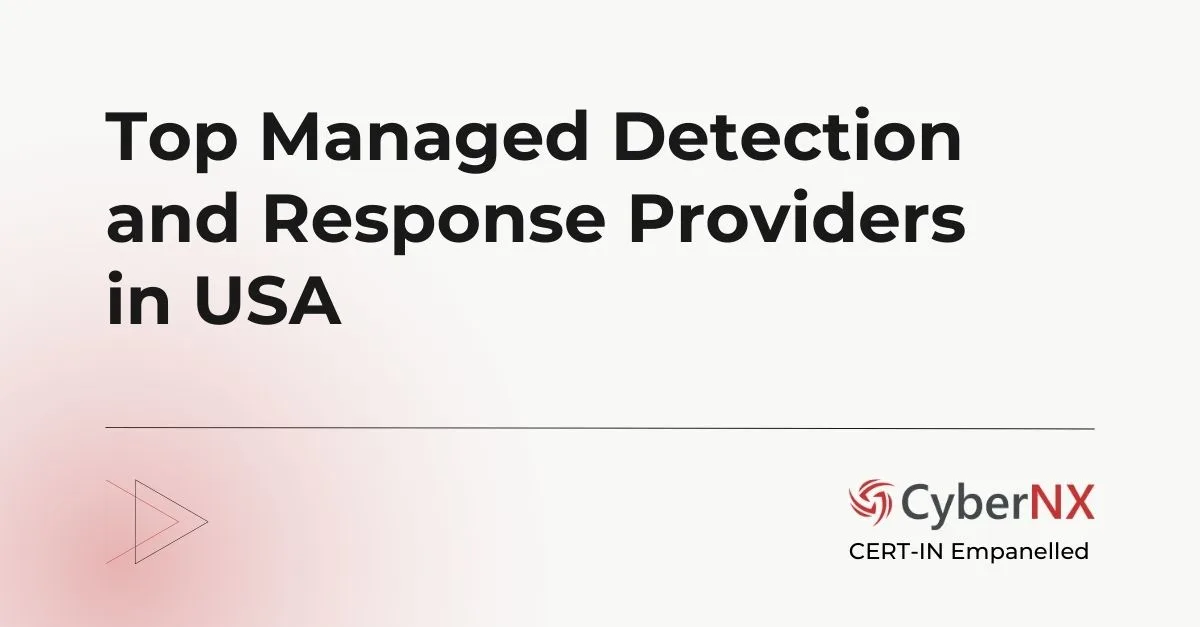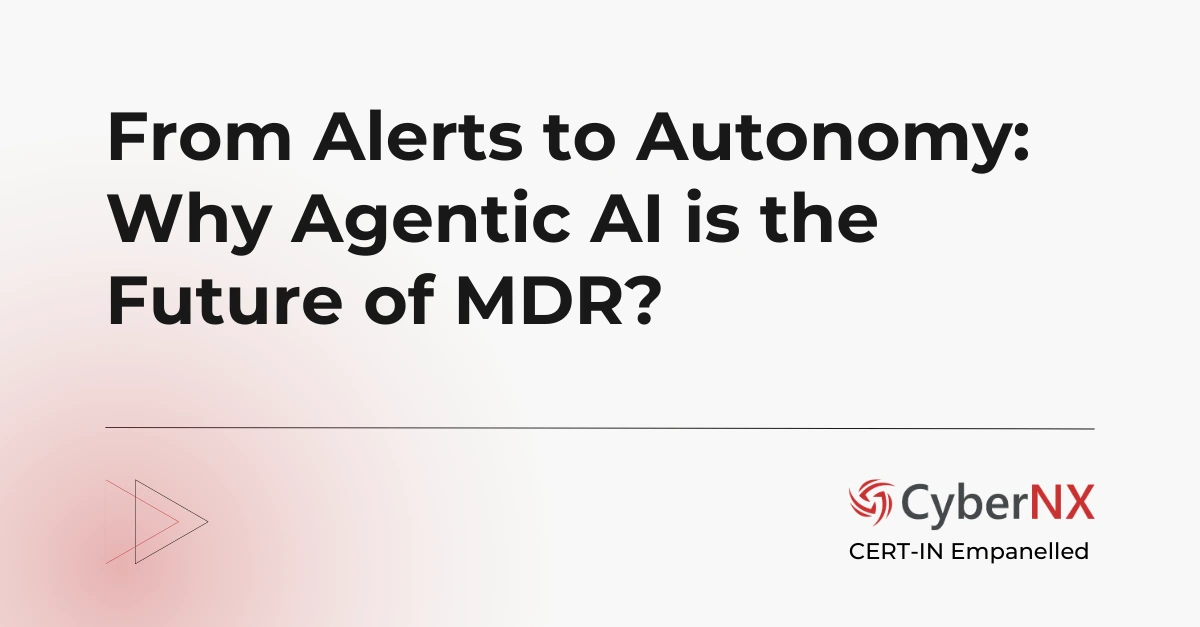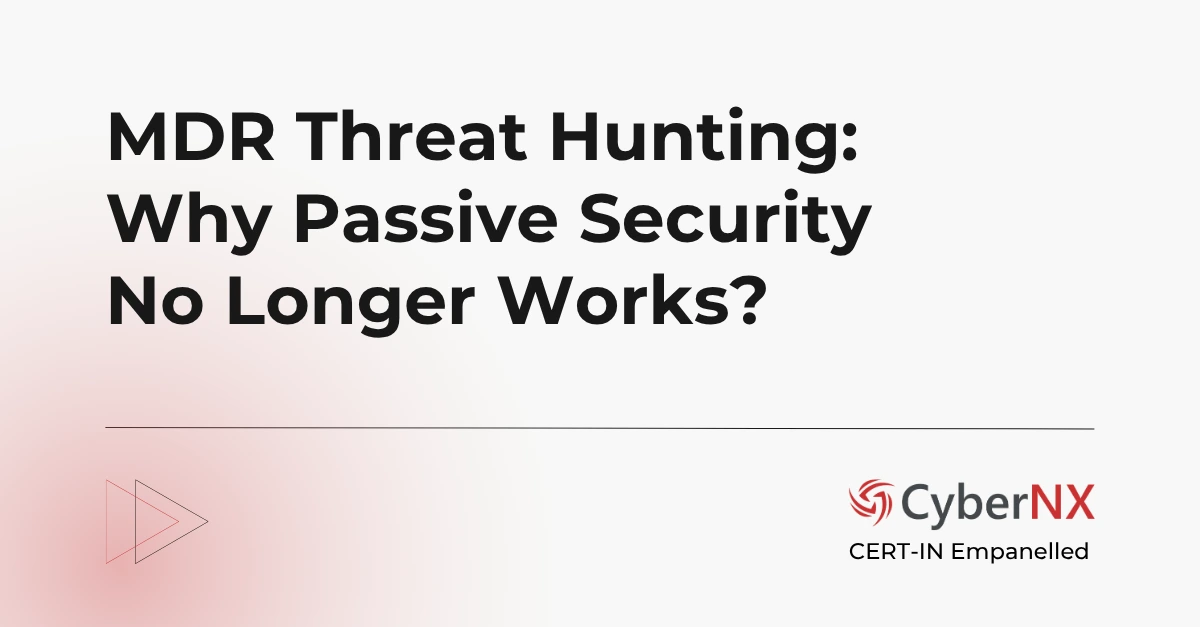Is your security team stretched thin? As threats evolve faster than ever, modern enterprises are under constant pressure to protect their entire digital assets. Managed Detection and Response (MDR) services promise to assist by providing continuous monitoring, threat detection and active containment.
Dive deeper into what is MDR and how it helps your business with our blog Managed Detection and Response (MDR) Guide.
But as with everything else, not all MDR service providers deliver the same value. Nor can everyone meet your specific objectives in your budget. So, how to make the right decision? It’s crucial to understand the considerations for choosing an MDR provider that align with your business needs. Once you assess these factors, you will be well prepared to make that all important decision.
Top Considerations for Choosing an MDR provider
While selecting an MDR partner, go beyond the usual process of comparing cost or service features. Today, the right choice will depend on how well the provider addresses your specific risks, integrates and collaborates with your team. Plus, understand their capability of delivering measurable security outcomes.
Here are the top 10 considerations for choosing an MDR provider, our experts have identified:
1. Define Success Based on Outcomes
Start by clarifying what success means for your organization. Do you want faster containment of active attacks, 24/7 visibility across endpoints and cloud, or stronger compliance posture? The right provider will focus on measurable results like reduced false positives, shorter detection times, and demonstrable incident containment – not just a long feature checklist.
2. Balance Between Technology and People
Effective MDR is more than software. Ask how the provider combines automated detection with skilled human analysts. While technology enables broad coverage, analysts validate threats, reduce noise, and coordinate real-world response. Avoid vendors that sell “fully automated” solutions without human oversight.
3. Evaluate Detection Coverage and Response Speed
Look closely at what the provider monitors: endpoints, cloud workloads, identity systems, email, and networks. Gaps create blind spots. Also verify service-level metrics: How quickly will they notify you about validated incidents? How fast can they isolate endpoints or accounts during a breach? Speed matters in real-world scenarios.
4. Assess Integration, Visibility and Control
An MDR provider should fit into your existing ecosystem. Can they integrate with your SIEM, EDR, or cloud platforms? Do they provide a portal with real-time visibility into alerts and investigations? You should have transparency and the ability to collaborate, not be left waiting for weekly summaries.
5. Demand Transparency and Reporting
Transparency builds trust. Ask to see sample dashboards and reports. A strong MDR provider will share meaningful KPIs such as:
- Detection rates
- False positive percentages
- Time to acknowledge
- Time to contain
This data proves whether they’re meeting their commitments.
6. Look for Threat Hunting and Intelligence
Modern attackers often bypass traditional tools. That’s why proactive threat hunting is critical. Check how the provider leverages threat intelligence tailored to your industry, region, and risks. Avoid one-size-fits-all playbooks – choose a partner who can customize detections and response to your environment.
7. Confirm Compliance and Data Handling
Every organization has legal and compliance obligations. Verify where investigation data is stored, who can access it, and whether the provider meets certifications relevant to your industry. Clear clauses about data ownership, privacy, and liability should be defined before onboarding.
8. Review Onboarding and Exit Strategy
Onboarding should deliver value quickly, not create friction. Ask about the steps involved, how long it takes, and what resources your team must provide. Equally important – check the exit process. How will your data be returned or securely deleted if you switch providers?
9. Understand Cost and Value
Different providers use different pricing models – per device, per user, or flat rate. Compare not just price, but total value: reduced internal workload, improved security posture, and avoided breach costs. The cheapest option often delivers the least value.
10. Validate with References and Proof Points
Finally, ask for case studies and customer references, ideally from organizations like yours. Better yet, request a pilot or proof-of-value engagement. This allows you to test the provider’s detection quality, analyst expertise, and operational fit before committing.
Conclusion
Selecting the right MDR provider is a business-critical decision. Remember: Considerations for Choosing an MDR Provider should always begin with your unique risks and desired outcomes. A trustworthy MDR provider will combine advanced technology with skilled human expertise, provide transparent reporting and adapt services to your needs. Choosing wisely ensures you’re not just alerted to threats – but actively protected from them. Contact us today for advanced MDR services, protecting businesses 24/7 and 365 days/year.
FAQs
What is the most important consideration when choosing an MDR provider?
The most important factor is alignment with your business goals – ensuring the provider delivers measurable outcomes like faster detection and response, not just tools.
How does MDR differ from traditional managed security services?
Unlike MSSPs that mainly monitor alerts, MDR providers actively investigate and respond to threats, often containing them before they escalate.
Should small and mid-sized businesses also consider MDR services?
Yes, MDR is valuable for SMBs that lack in-house security teams. It provides enterprise-grade monitoring and response without the cost of building a 24/7 SOC.
How can I compare MDR providers effectively?
Request references, review detection coverage, response speed, reporting transparency, and run a short proof-of-value to validate their capabilities.





